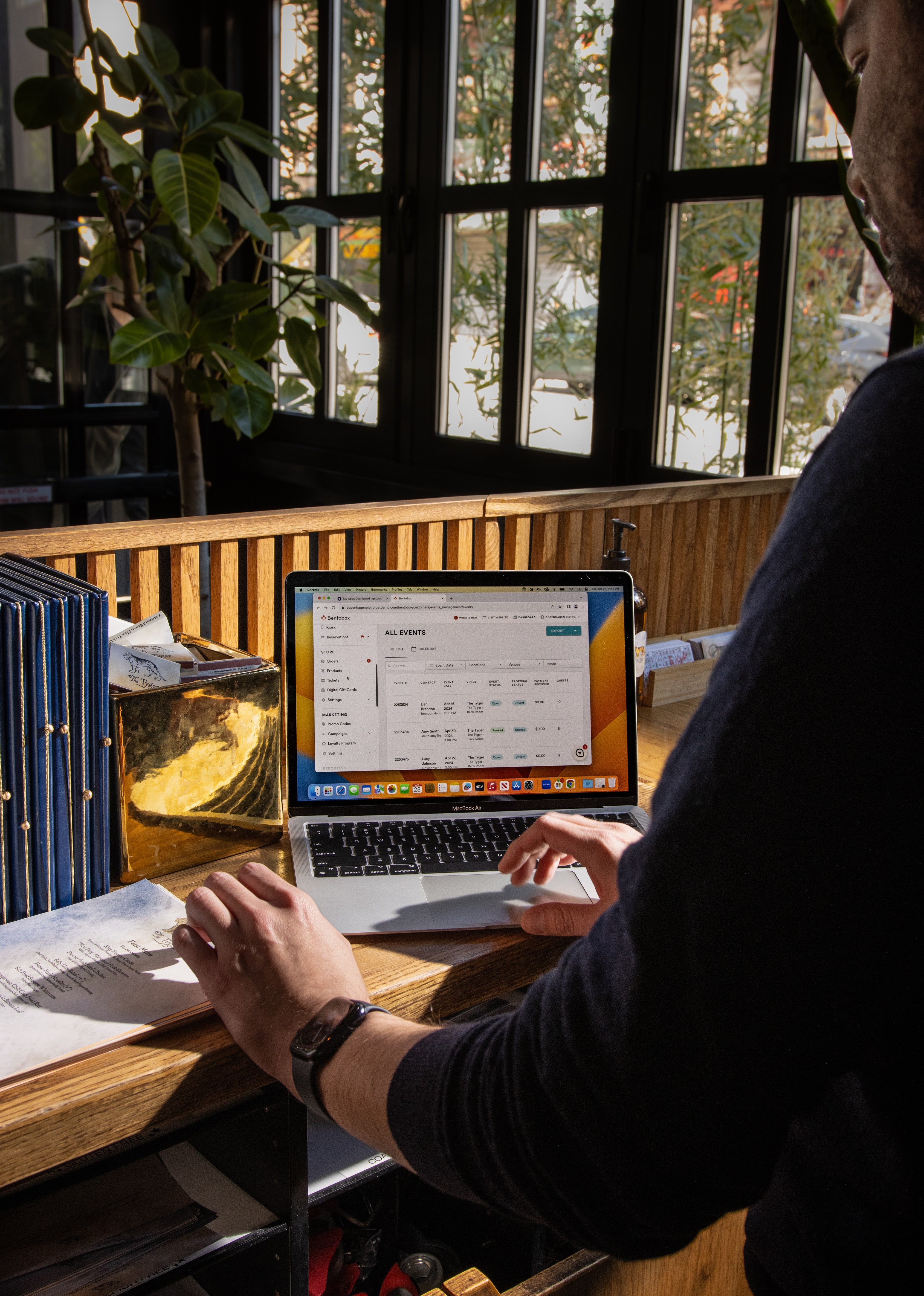Marketing
The Restaurant’s Guide to Generative AI
August 1, 2023
How restaurants can start using ChatGPT and Midjourney to drive revenue today.
On December 1, 2022, the world woke up to news shocking enough to make even the most harried line cook stop and take notice:
A computer wrote a letter about Santa Claus.
I asked OpenAI to write a letter to my son explaining that Santa isn’t real and we make up stories out of love. This is making me slightly emotional 🥹 pic.twitter.com/zNMolDCCWA
— Cynthia Savard Saucier (@CynthiaSavard) December 2, 2022
Like lightning it spread on social media: moments of pure astonishment from people getting their first taste of ChatGPT, the text-generating software built by tech company OpenAI. For the first time ever, software was able to write substantive text that was indistinguishable from text written by a human. Sometimes, as with the letter above, it was even good.
The world changed that day, and with it the restaurant industry.
Hospitality has not traditionally been on the bleeding edge of computer technology, but in this case, experts agree that the potential of artificial intelligence (AI) is so far-reaching that it will touch “every product across every company,” in the words of Google CEO Sundar Pichai. Restaurants need to take notice.
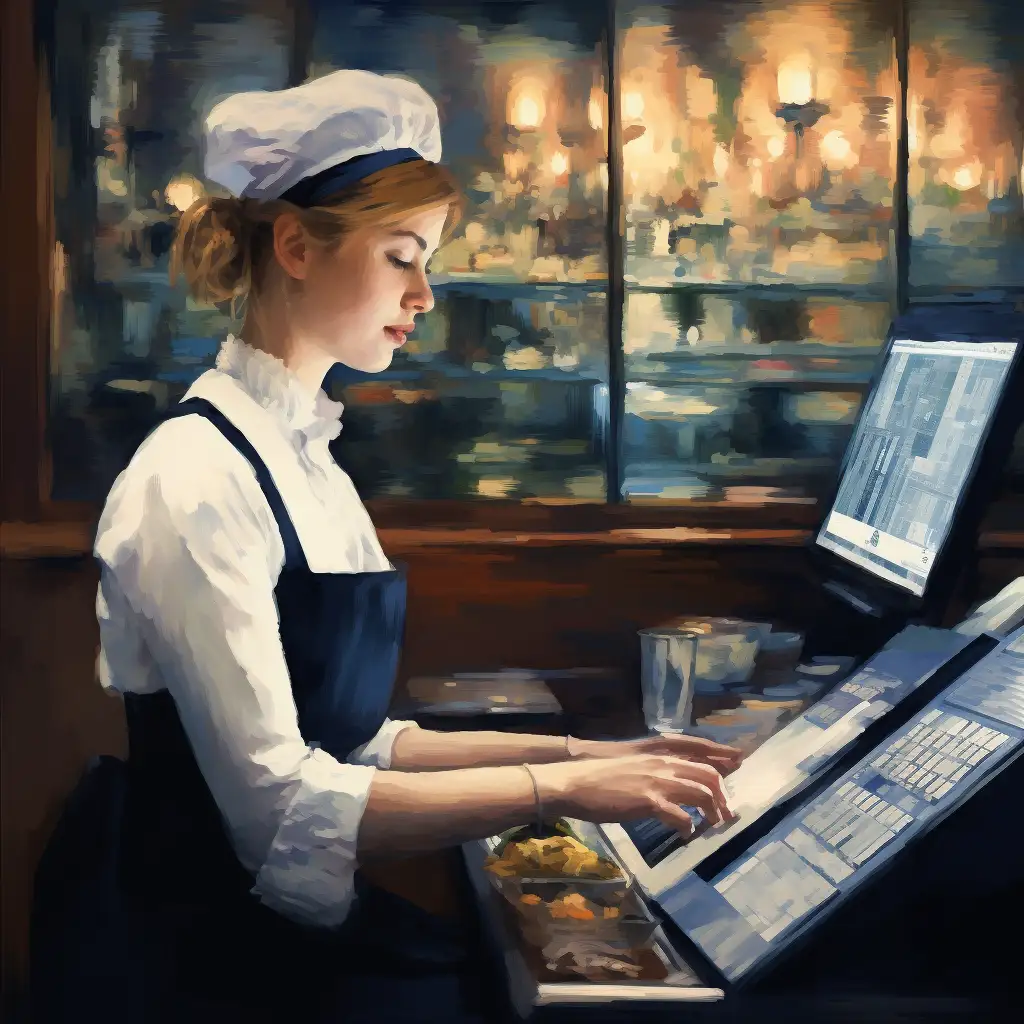
“A chef managing her restaurant's online ordering dashboard, done in the style of a Monet painting.” Generated for this article.
For hospitality operators who know how to use it, AI has the potential to save time and money — not in some hypothetical future, but right now. And in many cases, for free.
In this piece, we’ll present hype-free advice to help everyday operators who are curious about using these tools in their businesses. Everything below is achievable and investable today.
Bottom line? Restaurants stand to benefit from AI today, and operators don’t need a degree from MIT to do it.
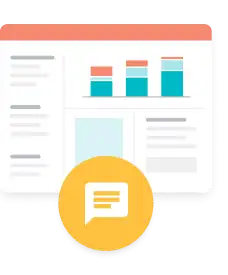
PRODUCT
Websites for Restaurants
Get a beautifully designed website with tools to grow your business.
How restaurants can start using ChatGPT and Midjourney
The arrival of ChatGPT was a huge deal for one simple reason: overnight, the AI revolution wasn’t something in the future. It was something that was happening now. And because of the way OpenAI chose to launch their new technology, anyone with an email address could start using it for free.
In the months before the launch of ChatGPT, though, the most impressive strides in generative AI were happening in image generation. Tools like Midjourney and Dall-E were creating incredible images, of deepening complexity and realism, based just on text prompts. While text generators like ChatGPT have gotten more of the headlines, image generation has progressed at a remarkable pace since 2022. Restaurants can start using both of these types of AI.
One note. Although the term “AI” includes technology that can perform an enormous range of tasks, in this article we’re using the term to refer to generative AI: algorithms that are able to write text, create audio, and generate photorealistic images — all from text prompts written in plain English.

“A restaurant dish that uses real ingredients to create a diagram of the Solar System”
How restaurants can sign up for ChatGPT for free
ChatGPT offers a free tier and a paid tier. The paid tier ($20/mo as of August 2023) gives the user access to a more powerful engine, but everything in this article can be done with the free tier.
To get started:
Head to chat.openai.com
Click Sign Up
Use an email address to create an account with OpenAI. (If you use a Google, Microsoft, or Apple account, this will go faster.)
Accept all the disclaimers
Start using ChatGPT!
To use ChatGPT, simply type a prompt into the text box and see what it replies. You can ask it to write in different tones of voice, different styles of text, and so on. Play around; it’s actually pretty fun.

(The letter goes on.)
It’s important to keep in mind that ChatGPT is not a search engine. You can’t search for plumbers in your area, nor should you ask it the best way to fix a leaky faucet. ChatGPT, in fact, is terrible with factual information. Do not trust any facts ChatGPT says.
That’s because it is not actually connected to the internet. ChatGPT is a large-language model (LLM), which means it is software that learned to speak English by reading billions and billions of sentences from all across the internet. But OpenAI stopped feeding it new stuff to read in 2021, so ChatGPT has never heard of anything that’s happened in the world since then. Bottom line? ChatGPT is great at composing text, but it is not yet able to be accurate.
How restaurants can start using Midjourney
Midjourney creates images using natural language prompts. You can use it to generate images in pretty much any style: photography, oil painting, comic books — the only limit is your imagination.
Unlike ChatGPT, Midjourney is no longer offering a free tier. Fortunately, the Basic Plan starts at $10/mo (or $96/yr for the annual plan) and offers fairly robust access.
Getting started on Midjourney is a bit more complicated than ChatGPT, because Midjourney doesn’t live on its own dedicated site. You need to first sign up for Discord, which is an online chat app, before choosing which paid version of Midjourney you’d like.
Go to https://discord.com/
Click “Open Discord In Your Browser.” You don’t need to download a desktop version.
Proceed through the account creation process. Make sure you verify your account via email.
Go to midjourney.com/account and sign up using your Discord account
Start using your Midjourney account by chatting with it in Discord.
Check out this YouTube video for more on how to get started. Total setup time, from signing up for Discord through generating your first images, should take around 10 minutes.
Midjourney is useful anytime you need a new image of something, whether art for the wall or a sketch of a new dish idea. But keep in mind that Midjourney is not image editing software; it can’t manipulate photos of your restaurant. There’s also a limit to how realistic the photo output can be, especially when people are in the photo, but you can get it fairly close by adjusting your prompts. Not bad for completely royalty-free imagery.
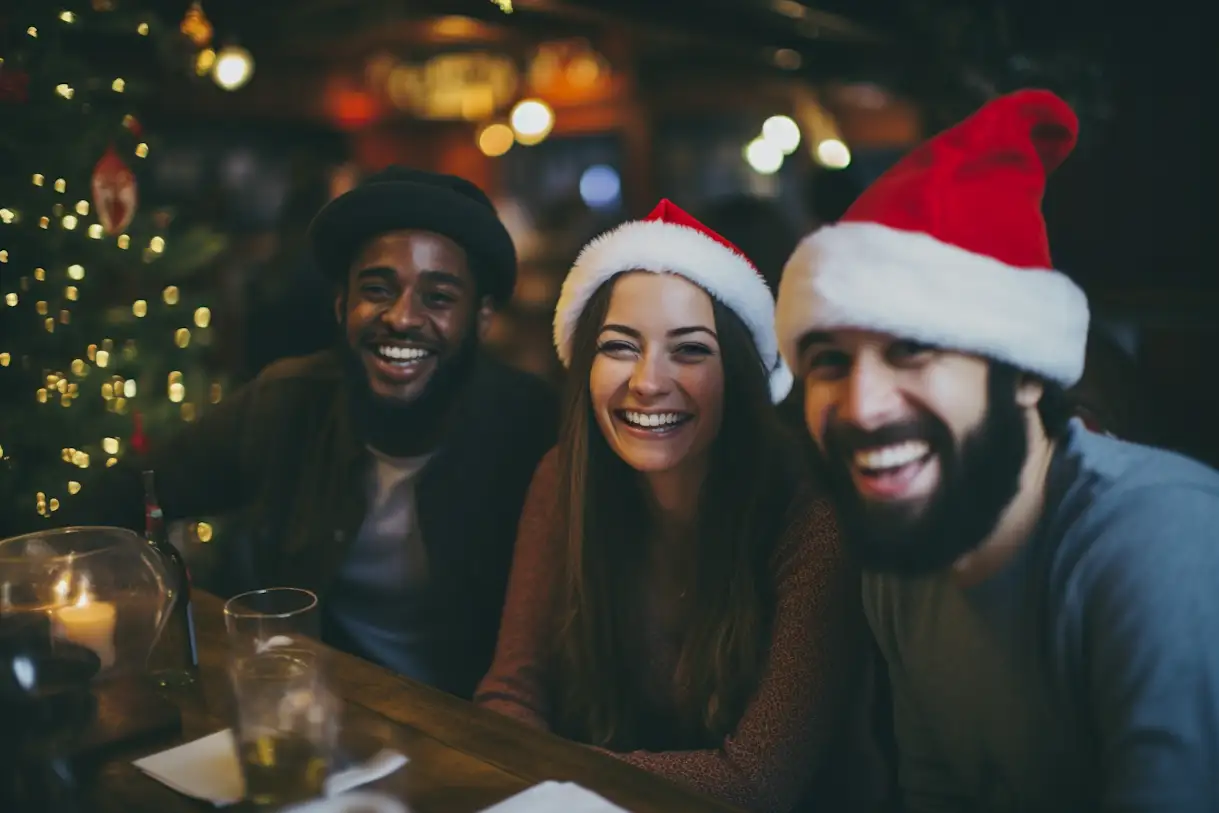
“People having fun at a restaurant christmas party, shot on film camera”
It’s good at understanding the language of your prompts — you can give it instructions like “in the style of a children’s book pastel illustration” — but unable to actually work with text in the image.
For example, below are the first four options it created when we asked it to imagine “the logo for a restaurant called The Waterfront Cafe.” As you can see, it understands not only the concept of being on the water, but the aesthetic such a restaurant would likely have. Meanwhile, it cannot work with in-image text to save its digital life.

“The logo of a restaurant called The Waterfront Cafe”
As Midjourney users get more and more skilled at creating the perfect image, they’re posting their tips and tricks to YouTube and Medium and other social media sites. If you’re curious how useful this could be, give it a try. Especially if you use a lot of stock photography or create a lot of imagery for marketing purposes, Midjourney could be a big saver of time and money.
How restaurants can use AI in 2023
How will AI impact the restaurant industry in the long run? No one knows for certain. It’s a question that contains about a thousand other questions that the smartest people in the world are racing to figure out. Just like with the internet, we’ll have to wait and see.
In the immediate term, generative AI is a labor-force multiplier. It saves time and makes tasks cheaper. That idea should sound pretty good to restaurant operators recovering from years of pandemic-induced labor shortages.
This efficiency is good for restaurant workers, too. It helps them focus on the work they actually want to do.
For the foreseeable future, AI will not be able to do the majority of work that a restaurant needs done. Computers are little help in the kitchen, for example. Many companies have been trying to develop food-prep robotics for years, but as of mid-2023, they’re a long way from being reliable or affordable. Nor can AI be the new Executive Chef. While AI recipes might inspire the imagination of a human chef (see below) ChatGPT’s recipes are usually terrible.
Some experts predict that more than 80% of restaurant jobs might be taken over by automation, but those studies refer to technology like kiosk ordering and kitchen robotics. AI will play a role in all of that, one day, but it’s not the AI we’re talking about now.
What generative AI can do is the kind of writing & image generation that is so far from the average restaurant employee’s core skill set that many restaurants don’t do it at all.
Here’s how you can use these tools now.
1. Send more marketing emails
Anything you’ve wanted to do in your restaurant that pertains to writing has just gotten a lot easier. The most revenue-generating application of this technology is to do more marketing.
Let’s start with email marketing. In BentoBox’s Guide to Restaurant Email Marketing, one of our suggestions is to send customers an email ahead of events, promotions, and holidays.
So let’s pretend we wanted to send an email inviting guests to, say, book a table for Mother’s Day. Ideally there’s some kind of package or promotion involved, but even if there’s not, it’s good to stay top of mind.
ChatGPT can help write that email.

This email is on the right track, but it’s too long and too syrupy. You can give this feedback to ChatGPT.

You get the idea. Play around with it until you get something usable. The above exercise took literally less than one minute to generate. With five minutes and a little post-GPT editing, imagine how good that marketing email could be.
Besides writing the actual email, ChatGPT can also help you write the all-important subject line. Ask it to give you 10 versions and you can pick the best one. (Outsourcing brainstorming in ways like this is one of the best uses of ChatGPT.)
From this day forward, not having enough time to do email marketing is no longer an excuse. If nothing else, just think: every other restaurant has access to this, too.

PRODUCT
Email Marketing for Restaurants
Want to build guest relationships with marketing automation? Trigger emails based on diner behavior to drive repeat revenue.
2. Post to social media
Why stop at email marketing? If you’re promoting something, put it on social media too.

This is usable copy. Now you just need an actual Instagram post. Enter Midjourney.

“A brightly-lit restaurant table with a bouquet of flowers at noon, celebrating Mother's Day, at a waterside restaurant.” Pick one or go back and try a different prompt.
Just to reiterate the point, all of the above took a combined five minutes to generate. With AI, you never need to let social media fall by the wayside again.
3. Create the basis of brand copy
If the most applicable use of Midjourney is something akin to becoming a stock photography generator, ChatGPT is in a similar position. It’s useful in places that require mundane writing.
Here’s the thing about ChatGPT’s default writing voice: it is boring. That’s the hard truth. Even when providing substantive content, ChatGPT sounds like a politician fresh out of a focus group.
For that reason, ChatGPT is not good at writing the copy that most represents your brand. It just won’t capture your personality or your human touch.
Using it to generate the occasional social media post or email, as above, is OK. But when you go to write the “Our Story” page of your website, for example, use ChatGPT to give you the basis of a story. Use it for inspiration. Then go and edit it heavily, adding your own touches liberally. This is the rule with using ChatGPT to write anything that the public will see: prompt, tweak, and edit.
4. Respond to bad reviews
One place where sounding like a politician might be nice? Responding to bad reviews.

Replying to negative reviews shows attention to customers and helps diners feel seen. Use the power of artificial intelligence to pour a spoonful of sugar onto whatever you’re really feeling.
5. Translate between languages
Since ChatGPT’s training data was mostly English, it is better at translating other languages into English. But in a pinch, you can give it a paragraph of English and ask it to translate it into any other language.
Here again, caution is necessary. ChatGPT is inaccurate, and accuracy is obviously an enormous component of translation. A number of media outlets and AI companies have published studies comparing ChatGPT to already-existing tools like Google Translate, and results have been mixed. PC Mag has a good rundown.
Bottom line: ChatGPT translation is better than nothing, but make sure you have careful eyes on both sides of the language gap making sure the message is coming through accurately.

PRODUCT
Restaurant SEO Services
Make sure your restaurant shows up as a top search result. We'll help you reach local customers with keywords, target and SEO best practices.
6. Write job descriptions
A detailed job posting can be the difference between wasting time on bad interviews and skipping right to the person with relevant experience. Use ChatGPT to do the heavy lifting.

7. Use AI for idea generation and inspiration
Once you get used to the capabilities (and limitations) of ChatGPT, you start to see it as a kind of supplemental employee: one that has writing and reasoning capabilities approximately equal to that of an intelligent high schooler, but which produces work instantly and at no cost.
This employee is good at brainstorming, too. Remember when we asked it to come up with 10 subject lines for the promotional email? You can do that with everything from new menu item names…

… to talking points in delicate situations….

… to complex reasoning. Here’s a question pulled verbatim from Reddit’s r/restaurant and posed to ChatGPT:

The answers provided by ChatGPT are not far off from how real Reddit users answered the question.
The best way to use ChatGPT for creativity is to use it to generate ideas that can inform or inspire your own (usually better) ideas.
Remember: ChatGPT is not some all-knowing oracle. It is a computer program that has read so much human language that it can pretend it understands human language. ChatGPT is just trying to put cogent sentences together, not unlock futuristic computer wisdom. Still, it’s very capable of helping spur your own creative idea generation.
8. Dream up new recipes
Since ChatGPT doesn’t have the ability to provide accurate factual information, it doesn’t know anything about how to prepare food safely. That means that you should never trust a recipe produced by ChatGPT. There have been (unconfirmed) reports of people hospitalized for undercooked meat after following ChatGPT’s recommended cooking times & temps.
A good mantra for AI in general: Use it for inspiration, not for expertise.
With that said, ChatGPT is great at helping you invent new dishes — and figure out how to name them, market them, talk about them, etc. Once you settle on a new idea, you can even head to Midjourney to consider different options for laying out the dish. For example, here’s the dish we asked ChatGPT to name a moment ago.

“Restaurant dish of a breakfast burrito with bananas on the side”
Dallas-based fast casual chain Velvet Taco recently tried something along these lines, launching a promotion called ChatGPTaco in which ChatGPT created a taco recipe… and then a human chef manipulated it and re-ran the prompt until something decent came out.
As stated above, AI is good for inspiration, not expertise.
Restaurants: The antidote to AI everywhere
The world stands on the brink of an explosion in artificial intelligence everywhere we look. So does the restaurant industry. At the biggest fast-casual franchises, AI is being used to take orders at drive-thrus. Tech companies are working hard to build restaurant-specific AI to answer phones, dial in price points, negotiate with vendors, and much more. Even if none of these technologies are ready for prime time yet, AI capabilities will be a part of your workflow sooner or later.
As computers become more powerful in every corner of the economy, there’s a good chance that one beneficiary will be the industries that sell real-life experiences.
In March 2023, the CEO of computer chip maker NVIDIA said, “Every single pixel will be generated soon. Not rendered: generated.” That means when you visit a website in the near future, instead of loading the same image for every user, your computer will create a new image just for you. Imagine the power of Midjourney combined with advertising: there may come a day when every single ad you see has your face in it, smiling and using the product.
Some experts think that in such an environment, where no photo is authentic and nothing is permanent, people will want to retreat from the digital sphere and spend more time in the real world. If they do that, they’re going to seek out restaurants: real, human spaces that serve analog connection.
Restaurant dining may be the anti-AI, but here’s the funny thing about technology: when it’s good, it becomes invisible. It becomes the default, running before our eyes without us noticing. Artificial intelligence is going to be the same. Restaurants should take advantage of it now — by doing more efficient and more creative work, at little cost, all for the purpose of driving better and more human hospitality.

PRODUCT
Websites for Restaurants
Get a beautifully designed website with tools to grow your business.
Recommended
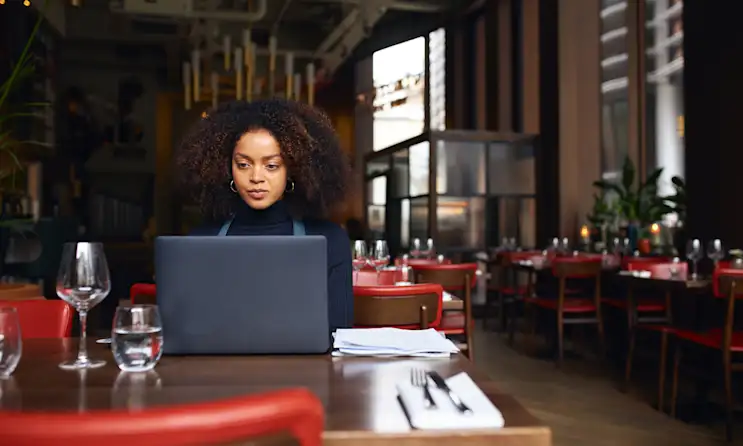
Marketing
A Beginner’s Guide to Facebook Ads for Restaurants
January 8, 2024
Intimidated by the world of Facebook advertising? Here’s a step-by-step guide for setting up your ads with real restaurant examples.

Marketing
Online Advertising Tools & Tips for Restaurants
April 30, 2019
A breakdown on Facebook, Instagram and Google Ads

Holidays
15 Digital Marketing Holiday Templates for Restaurants
September 18, 2024
Give your holiday marketing some extra special treatment with one of the following templates.
